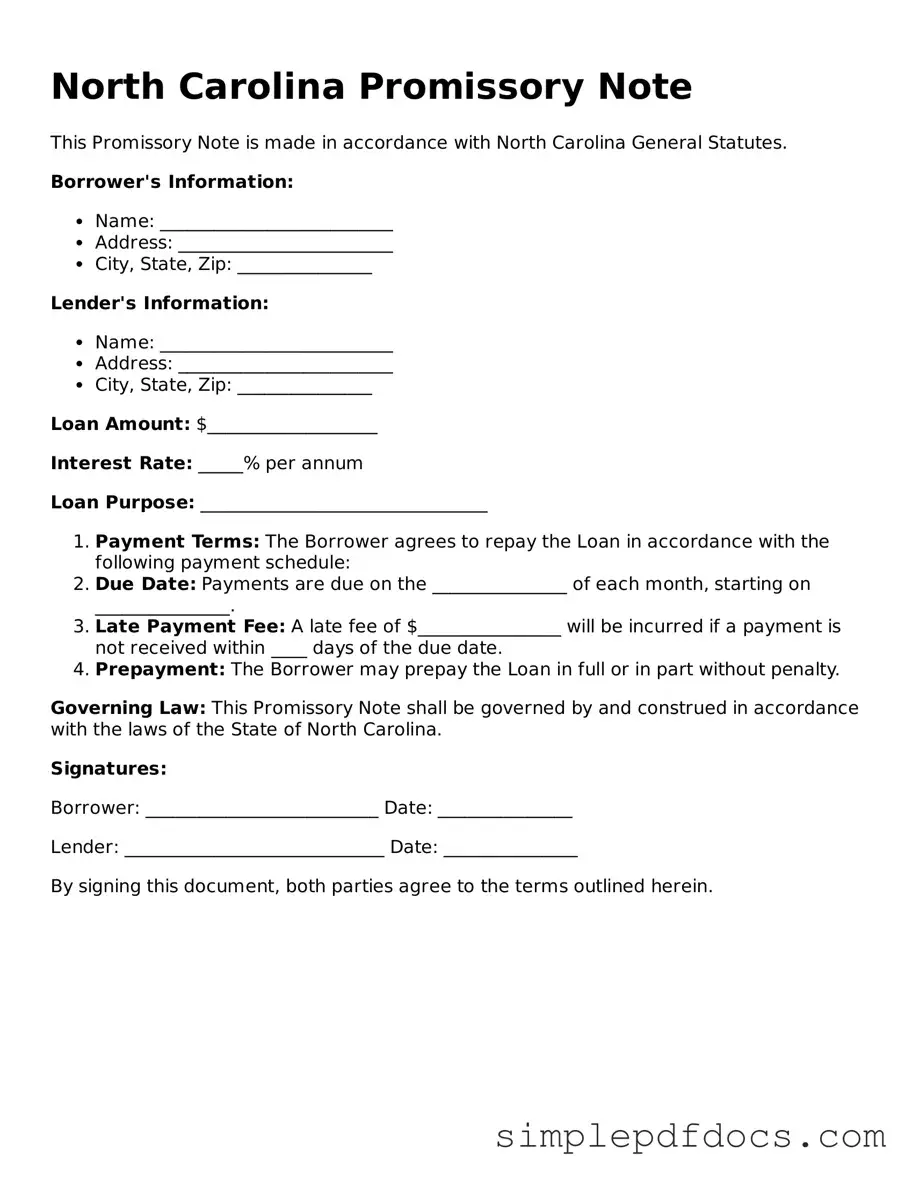Legal Promissory Note Document for the State of North Carolina
A North Carolina Promissory Note is a legal document that outlines a borrower's promise to repay a specified amount of money to a lender under agreed-upon terms. This form serves as a record of the loan agreement and includes essential details such as the loan amount, interest rate, and repayment schedule. Understanding the components of this document is crucial for both borrowers and lenders to ensure clarity and enforceability.
Get Document Here
